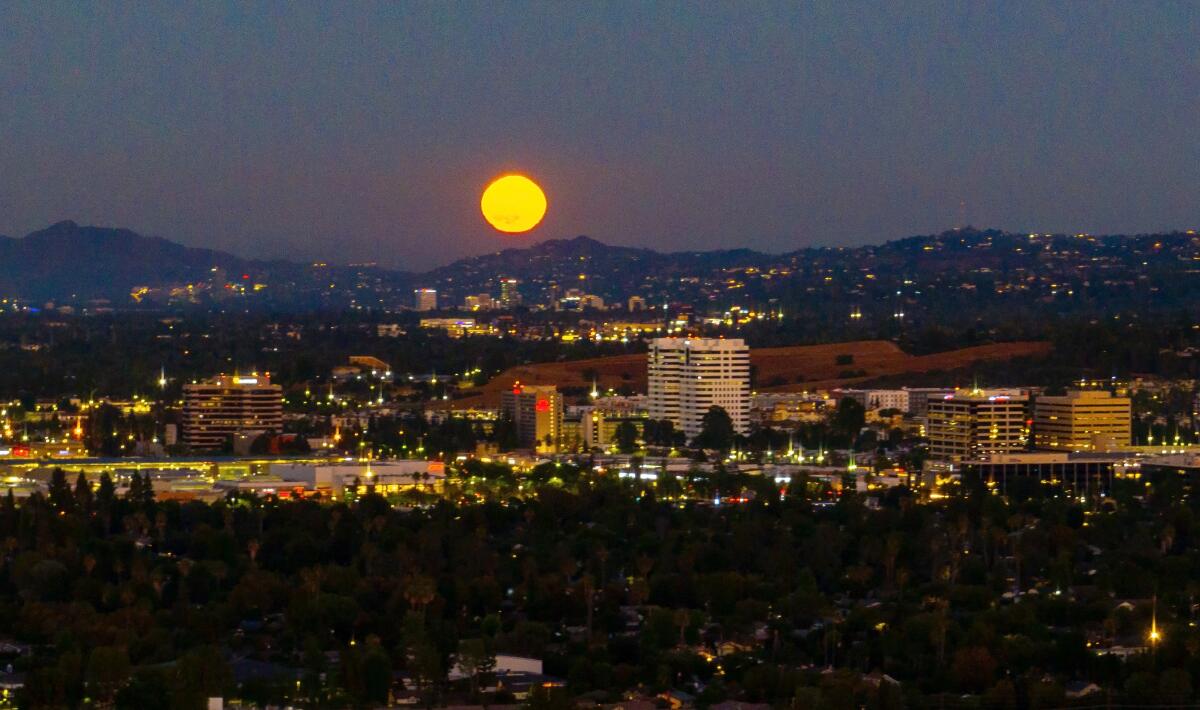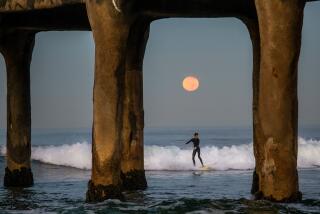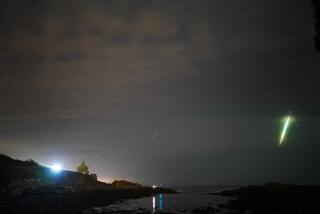Rare super blue moon will be in the skies this week. Here’s how to see it

- Share via
First came a solar eclipse. Then a “strawberry moon.” Now, celestial enthusiasts can look forward to seeing a super blue moon this week starting Monday.
The full moon, which will be both a supermoon and a blue moon, will grace the skies Monday and will appear full until early Wednesday morning, according to NASA. It’s considered both a supermoon and a blue moon because of its proximity to earth and its timing during the season.
Despite the intriguing name, NASA says there won’t be any visible changes or blue hue with a super blue moon.
There are two definitions of a blue moon — a monthly blue moon, referring to the second full moon in a month; and a seasonal blue moon, the third of four full moons in a season, like the one occurring this week.
On average, blue moons occur about every two or three years, according to NASA. Super blue moons happen about every 10 years but it can be as much as 20 years.
It’s just too hot in L.A. Hiking at night during a full moon offers an opportunity for a different sensory experience while giving you a break from the relentless heat.
A supermoon, first coined by astrologer Richard Nolle in 1979, is a full moon within 90% of its closest approach to Earth, according to NASA. A supermoon looks about 30% brighter and 14% larger than an average full moon.
Monday’s super blue moon will kick off four consecutive supermoons this year. The next three will occur on Sept. 18, Oct. 17 and Nov. 15.
October’s supermoon will be slightly closer than September’s, according to Noah Petro, a lunar reconnaissance orbiter project scientist at NASA’s Goddard Space Flight Center.
This week’s moon being super and blue isn’t the only thing that makes it special, scientists say. It’s also in the middle of a major lunar standstill, which happens only once every 18.6 years. That’s when the moon’s orbit is most extreme and it rises and sets at its most northerly and southerly positions, extending beyond those of the sun.
“It’s rising farther south than the winter solstice sun,” Vanessa Alarcon, the astronomical observer at the Griffith Observatory, told The Times last week. “It’s actually pretty impressive when you see it.”
Griffith Observatory has moonset lines on its lower West Terrace, pointing to the exact spots on the horizon where the major lunar standstill will occur. But it should be viewable to anyone when it rises above the eastern horizon and sinks on the western horizon, Alarcon said. The phenomenon will occur through much of 2025.
Times staff writer Grace Toohey contributed to this report.
More to Read
Sign up for Essential California
The most important California stories and recommendations in your inbox every morning.
You may occasionally receive promotional content from the Los Angeles Times.












